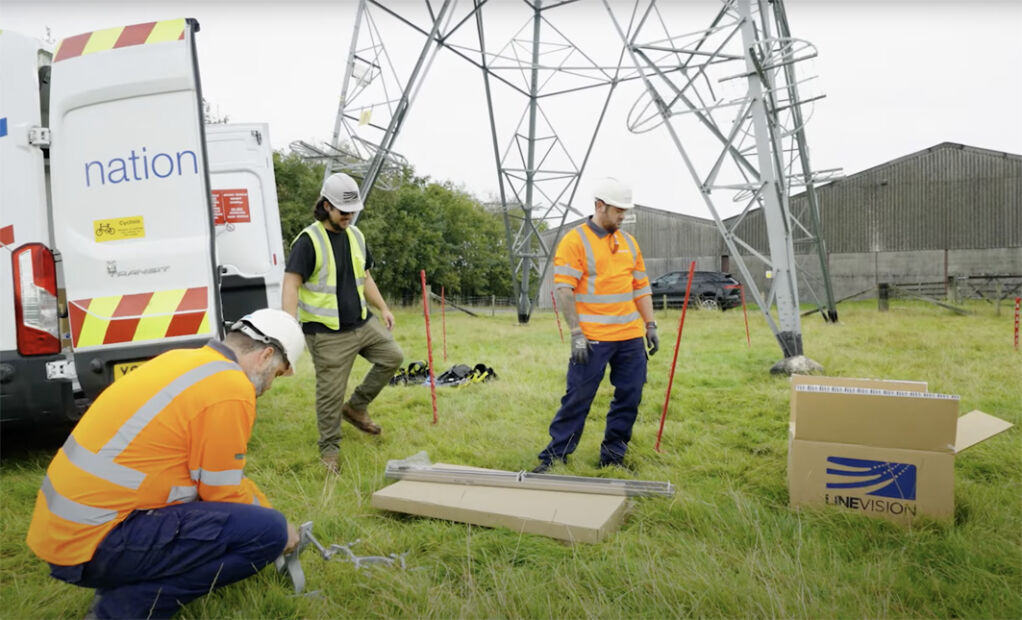LineVision boosts National Grid capacity
- November 2, 2022
- Steve Rogerson

National Grid is deploying LineVision technology on its electricity transmission network to expand the capacity of its existing overhead power lines.
Partnering with Massachusetts-based LineVision, a provider of non-contact overhead power line monitoring systems, it is installing sensors and a dynamic line ratings (DLR) platform on a circuit in the north of England to increase its power carrying limit.
The sensors will continuously monitor the transmission lines and apply analytics to calculate the DLR. The DLR is determined by a power line’s physical and electrical properties, such as size, resistance and maximum safe operating temperature, as well as local weather conditions.
Electricity transmission lines have historically been operated using a static line rating calculated using conservative and static values for assumed weather conditions. LineVision’s dynamic line ratings determine capacity limits by combining real-time conductor properties and forecasted weather conditions, allowing for more informed grid operations and safely increasing operational limits.
The new technology has the potential to unlock 0.6GW of additional capacity a year, enough to power more than 500,000 homes. By increasing capacity and allowing more renewable power to flow, this technology could also reduce constraint payments where the electricity system operator pays generators to stop producing power to avoid overloading the transmission system, with this trial potentially saving £1.4m in constraint costs a year.
The two-year trial on a 275kV circuit between Penwortham and Kirkby in Cumbria follows the successful implementation of LineVision technology on National Grid’s networks in New York and Massachusetts and is part of National Grid’s investment to increase the grid’s capacity and connect the renewable power needed for Britain to reach its net zero by 2050.
“To meet the increasing demand for electricity and deliver net zero, our network needs to grow, but at the same time we are continually looking at ways of expanding capacity on our existing infrastructure,” said Lydia Ogilvie, director of network strategy at National Grid. “I’m proud that National Grid is leading the way in using transformational and innovative engineering, integrating vital grid enhancing technologies like LineVision’s, to decarbonise, and deliver world class reliability, at lowest costs for consumers.”
Hudson Gilmer, CEO of LineVision, added: “If we are to have any hope of meeting ambitious climate targets by 2030, we need to essentially double the size of our grid. And while we need new transmission, we need to act now. LineVision’s DLR platform can double the integration of renewables on the grid right now and we’re pleased to work with our colleagues once again at National Grid to accelerate the path to a net-zero grid.”
National Grid owns and operates the electricity transmission network in England and Wales, with day-to-day responsibility for balancing supply and demand. It also operates, but does not own, the Scottish networks. The networks comprise approximately 7200km of overhead line, 1500km of underground cable and 342 substations.
LineVision provides electric utilities with the real-time monitoring and analytics needed to accelerate the net zero grid. Its patented non-contact sensors collect information to unlock additional capacity on existing lines, provide insight into conductor health, and detect anomalies and risks. The platform can be rapidly deployed at scale without the need for scheduled outages, live line work or specialised installation equipment.





